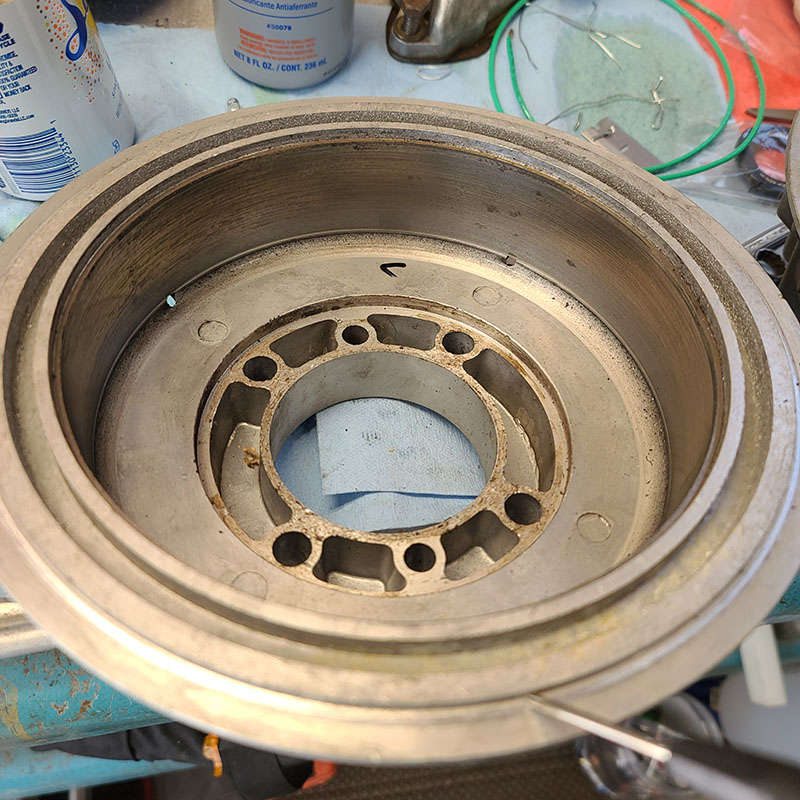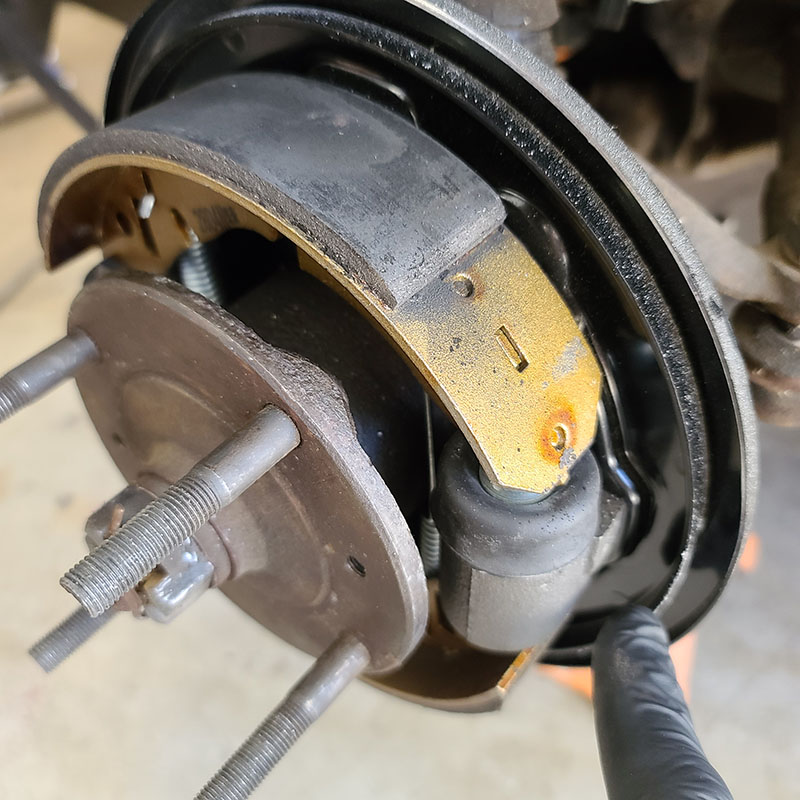| Orig. Posting Date | User Name | Edit Date |
| Mar 30, 2022 10:19PM | Alex | |
| Mar 29, 2022 10:17PM | minitrax | |
| Mar 18, 2022 01:44AM | Alex | |
| Mar 17, 2022 09:11PM | minitrax | |
| Mar 17, 2022 02:15PM | Dan Moffet | |
| Mar 17, 2022 01:57PM | minitrax |
|
Total posts: 10238
Last post: Apr 26, 2024 Member since:Mar 24, 1999
|
Cars in Garage: 0
Photos: 0 WorkBench Posts: 0 |

|
Nice to know you sorted it.
On reflection, the drums probably expanded a smidge in your two mile drive which is why they didn't rub when checked.
Even the radiated warmth from the bearings rotating without heavy brake applications would possibly be enough if the clearance cold was .000000001" :)
|
Total posts: 11
Last post: Mar 29, 2022 Member since:Feb 25, 2022
|
Cars in Garage: 0
Photos: 0 WorkBench Posts: 0 |
|
Total posts: 10238
Last post: Apr 26, 2024 Member since:Mar 24, 1999
|
Cars in Garage: 0
Photos: 0 WorkBench Posts: 0 |

|
I've had this a couple of times on different cars with the aluminium spaced drums on the rear. The old drums will have done many years and thousands of miles of wearing in, and the inner edge is almost certainly a different size & shape to the new one. It doesn't take a huge build up of tolerances and flex to cause a minor rub.
The backplate often has a minor ripple or blob of rust in the spot welded groove that the back of the drum rotates in which will touch. I've seen brakes locked solid when that rusts up badly.
If all of that is flat and clear, check the drum for true and flat in a lathe with a DTI.
|
Total posts: 11
Last post: Mar 29, 2022 Member since:Feb 25, 2022
|
Cars in Garage: 0
Photos: 0 WorkBench Posts: 0 |
Good thoughts. I am leaning on the wheel bearing as the cause. Will check it out.
I hooked a few turns on the test drive, perhaps that caused the play. I do not really know the history of this car unfortunately.
Will report back...
|
Total posts: 9545
Last post: Apr 25, 2024 Member since:Aug 14, 2002
|
Cars in Garage: 0
Photos: 0 WorkBench Posts: 0 |

|
1. The backing plate is miss-aligned. when you worked on the brake cylinders, you may have disturbed the position or shape of the backing plate.
2, The wheel bearing is worn/loose, allowing the axle assembly to pivot enough to make contact. It wouldn't take much.
Check that your wheel bearing is torqued to spec and still turns smoothly when to spec.
Check the backing plate is bolted tight and even to the swivel hub. If you removed it, you may have trapped a tiny bit of debris between the backing plate and the swivel hub. Or it may be slightly warped.
.
"Hang on a minute lads....I've got a great idea."
|
Total posts: 11
Last post: Mar 29, 2022 Member since:Feb 25, 2022
|
Cars in Garage: 0
Photos: 0 WorkBench Posts: 0 |
Ive recently fitted aluminum drums with a brake rebuild dual cylinders in front. On initial test drives everything was great worked well.
Ive also been working on intake and went for another test run. Mid drive I started to hear a rubbing sound (drivers side). It turns out the backing plate started rubbing on the outer edge of the aluminum brake drum.
I pulled the opposite side and swapped drums and same thing (driver side), rubbing at about 4o'clock for a couple inches.
Quite strange it started after a few drives, however only about 2 miles tops. Comparing drums they appear identical. The wheel was defintely seated and tight. Nothing loose on backing plate...
Any ideas?





